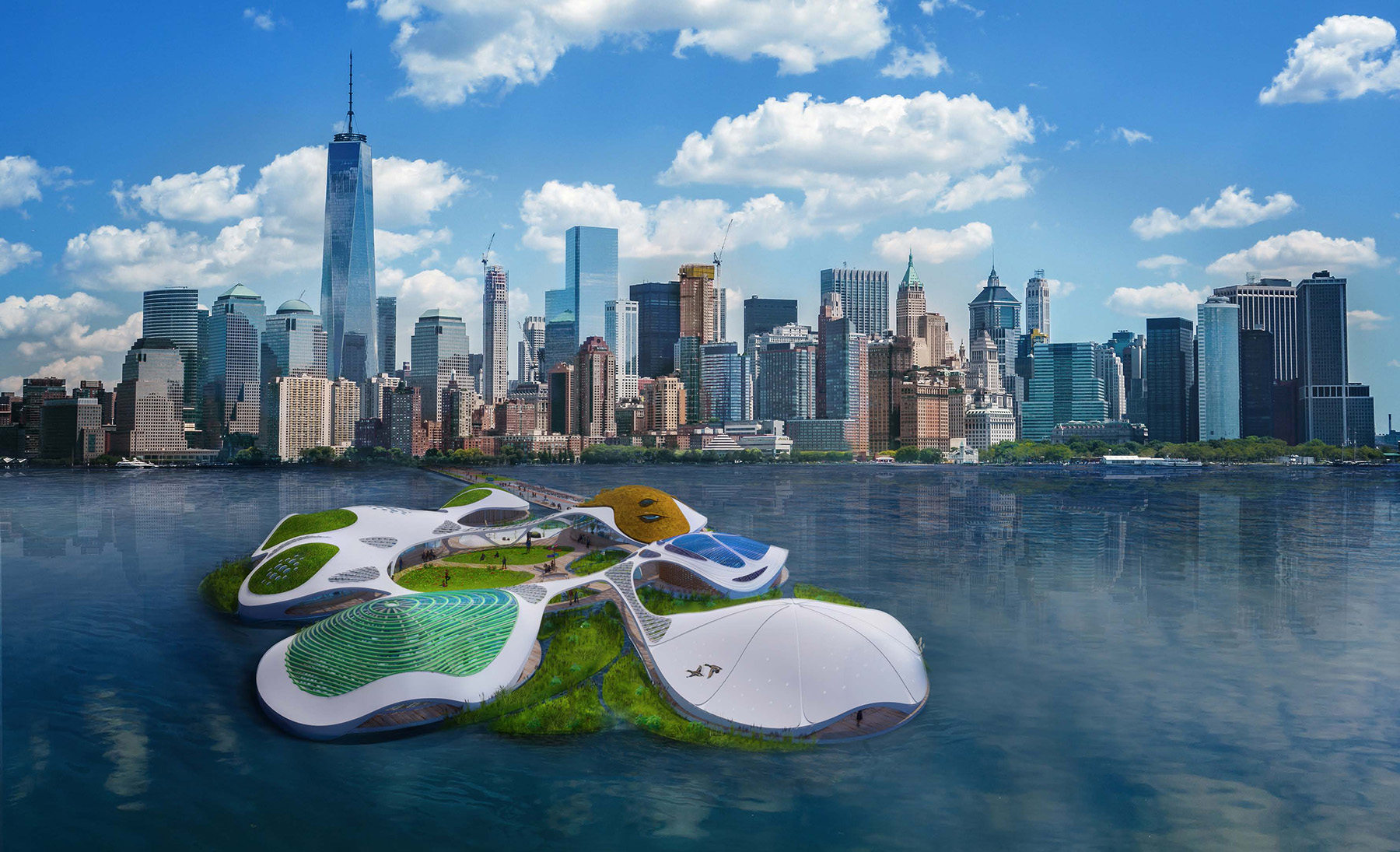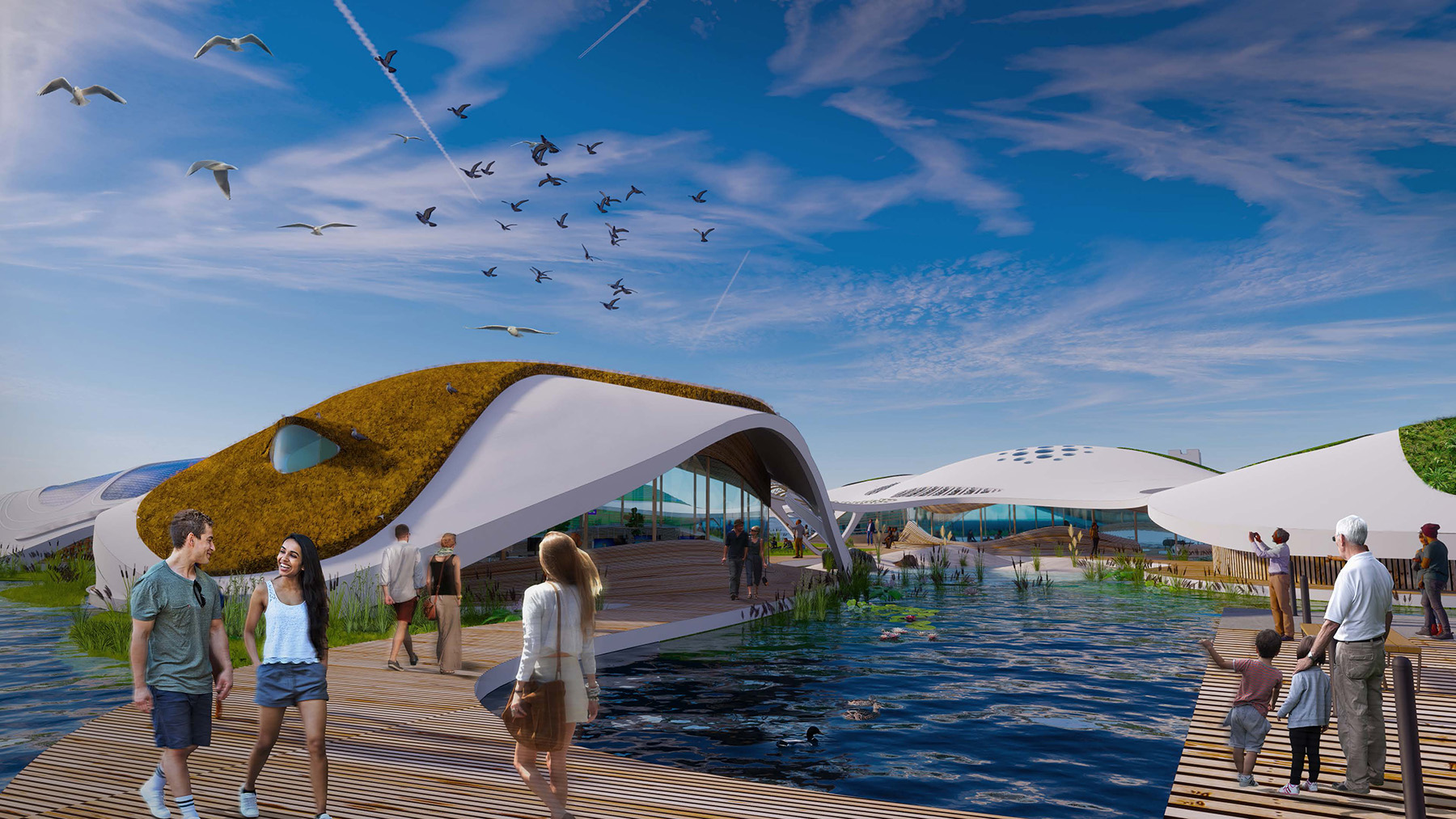
We The Planet, an organization committed to protecting life on Earth through sustainable and innovative design, has commissioned architecture studio 3deluxe to design a floating campus for New York Harbor. The campus will be a people- and wildlife-friendly space in harmony with nature. The initial concept comprises seven covered “discs” that will be linked via walkways and surrounded by wetlands populated by local flora and fauna.
The campus will be designed according to 3deluxe’s 50/50 concept, which is that all building projects should give back just as much substance to nature as they take from it. As a result, half of all building space would be dedicated to nature-oriented biotopes. “The quality of life in the cities would be enormously improved in every respect” with these designs, according to the architects. Air quality would improve, the traditional heat-island effects of urban environments would decrease, and the enjoyment of nature would be possible within cities.

The floating campus would be mobile and, thus, unaffected by rising sea levels. It would include public areas for sports and leisure, a transition area at the center of the campus with a meadow and a beach, and facilities that could be used for meetings and educational events. The goal is that the complex will be an example of what life, community, and work could look like in the future.
Natural and recycled materials would be used to create the buildings, and green roofs would be used to boost the availability of natural habitats.
Additional floating platforms could be added to expand the available green spaces and parks along the city’s shoreline, holding, for example, a looped running track through and surrounded by wetlands. The campuses could be attached to a shoreline pier or each other, or anchored within the harbor as individual islands.
The campus is envisioned as being entirely self-sufficient, generating its own energy and producing its own water. Bioluminescent bacteria that convert methane gas into energy could be used as a light source at night. In addition, wind turbines, photovoltaics, and specialty marine turbines under the platform designed to work with slow-moving water would generate energy, while algae bioreactors and oyster farms would naturally scrub pollutants from water.
This article first appeared in the May/June 2021 issue of Civil Engineering as “Urban Nature.”




